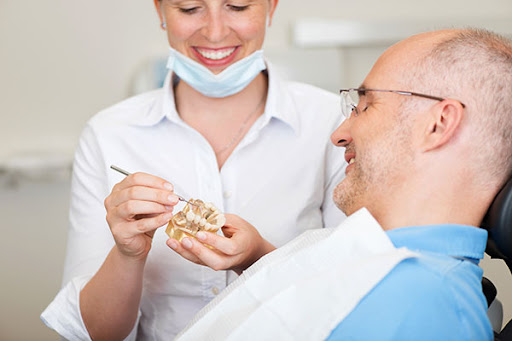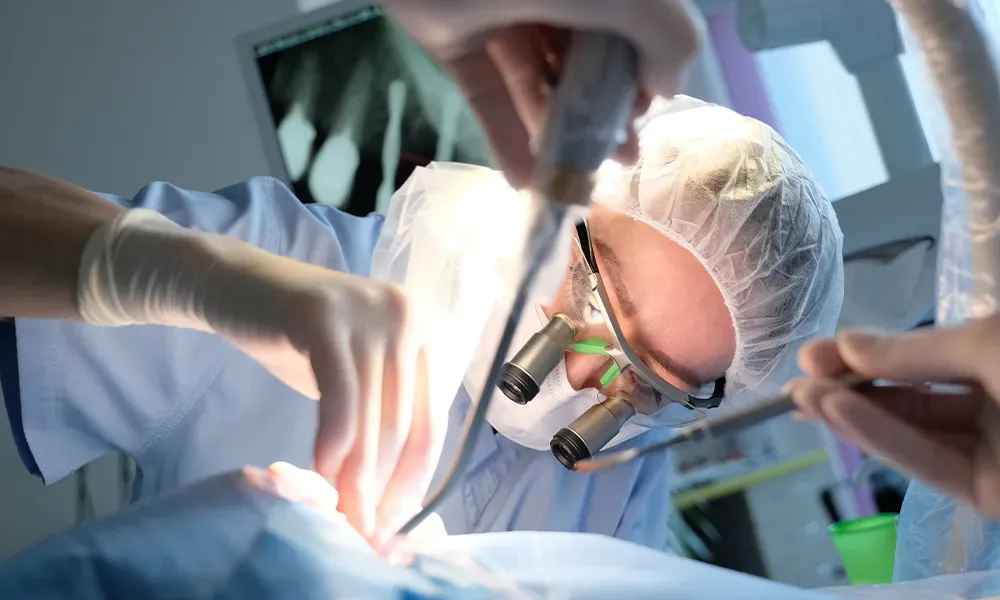Gum corrective surgery, also known as periodontal surgery, is a dental procedure aimed at treating gum disease and restoring the health and appearance of the gums. Specialists offering cosmetic dentistry in Alexandria, Virginia, aim to rehabilitate and rejuvenate your gum health through several gum corrective surgeries.
To know more about gum corrective or periodontal surgery, read on!
Dental issues corrected by periodontal surgery
Periodontal surgery can correct a variety of issues, including:
- Gum recession: Exposed roots and receding gum lines can be corrected with gum grafting.
- Gingivitis: Gingivectomy or gingivoplasty can treat inflammation and infection of the gums.
- Periodontitis: Advanced gum disease can be treated with pocket reduction surgery or regenerative procedures.
- Uneven gum lines: Gingivoplasty can reshape and even out the gum line.
- Exposed roots: Gum grafting can cover exposed roots and reduce sensitivity.
- Deep pockets: Pocket reduction surgery can reduce the depth of pockets between teeth and gums.
- Bone loss: Regenerative procedures can help regenerate lost bone tissue.
- Loose teeth: Periodontal surgery can help stabilize loose teeth.
- Aesthetic concerns: Gum contouring can improve the appearance of the gums and smile.
- Functionality issues: Periodontal surgery can improve bite function and chewing efficiency.
Types of periodontal surgery
There are several types of gum corrective surgery, including:
- Gingivectomy: Removes excess gum tissue to treat gingivitis or gum enlargement.
- Gingivoplasty: Reshapes and contours the gum tissue to improve appearance or treat gum recession.
- Gum Grafting: Transplants healthy gum tissue to cover exposed roots or repair receding gums.
- Pocket Reduction Surgery: Reduces the depth of pockets between teeth and gums to treat periodontitis.
- Crown Lengthening: Exposes more of the tooth by reshaping the gum and bone.
- Regenerative Procedures: Helps regenerate lost bone and tissue to treat periodontitis.
- Soft Tissue Grafting: Transplants healthy gum tissue to cover exposed roots or repair receding gums.
- Bone Grafting: Transplants healthy bone tissue to repair damaged or lost bone.
- Ridge Augmentation: Enhances the appearance of the gum ridge after tooth loss.
- Gum Contouring: Reshapes and contours the gum tissue to improve appearance.
- Laser Gum Surgery: Uses a laser to remove excess gum tissue or treat gum disease.
The procedure involved in periodontal surgery
The procedure for gum corrective surgery typically involves the following steps:
- Consultation and planning: Discuss your treatment options with a periodontist or dentist.
- Anesthesia and sedation: Receive local anesthesia and/or sedation to ensure comfort during the procedure.
- Surgical site preparation: Clean and disinfect the treatment area.
- Incision and tissue removal: Make an incision and remove excess gum tissue (gingivectomy) or reshape the gum line (gingivoplasty).
- Grafting (if necessary): Transplant healthy gum tissue to cover exposed roots or repair receding gums.
- Bone reshaping (if necessary): Reshape the bone to improve the gum’s attachment or enhance aesthetics.
- Wound closure: Close the incision with sutures or staples.
The aftercare involved

Post-periodontal surgery aftercare is crucial for proper healing and minimizing complications. Follow these guidelines:
- Avoid strenuous activities for 2-3 days.
- Take prescribed pain medication as directed.
- Apply gentle pressure with gauze for 30 minutes to control bleeding.
- Apply ice packs for 15 minutes, 3-4 times a day.
- Drink plenty of water and avoid hot liquids.
- Eat soft, nutritious foods for 1-2 weeks.
- Avoid brushing or flossing the surgical site for 1-2 weeks.
- Use a gentle mouthwash (if prescribed).
- Resume regular oral hygiene habits after 2 weeks.
- Attend scheduled appointments for monitoring and aftercare.
- Take medications as prescribed
- Avoid
- Smoking and tobacco products
- Spicy or sharp foods
- Drinking through a straw.
- Heavy lifting or bending.
Gum corrective surgery is a valuable treatment option for individuals with gum disease or aesthetic concerns. While it carries some risks and complications, the benefits of improved oral health and appearance make it worthwhile. Consult a periodontist or dentist to determine if gum corrective surgery is right for you.

